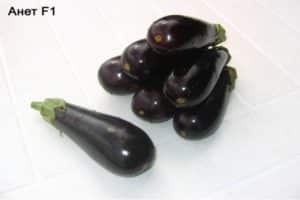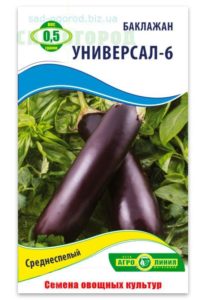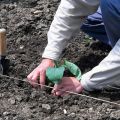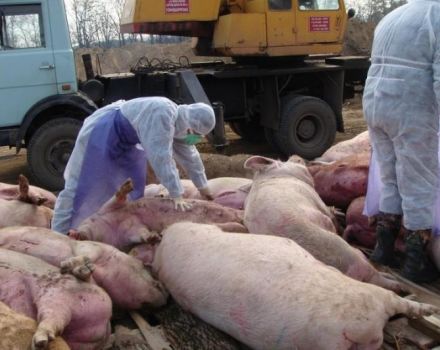How to properly grow and care for eggplants in the open field, agricultural technology
Culture lovers strive to get the harvest without much effort. Growing eggplants is a troublesome process, but subject to the requirements and rules for care, they get the declared harvest.
Description of the plant
The culture itself is a wild plant from India. There, its fruits are eaten for a very long time. In Europe, for a long time, they were wary of the fruits of this culture. And it was grown only as an ornamental plant. But gradually the vegetable entered the diet and began to gain popularity. Everywhere, eggplant is grown as an annual crop, but few people know that it is actually a perennial.
The fruits of the plant are used for any preparation method. They prepare hot dishes, cold snacks, salads and all kinds of winter preparations.
At the initial stage of development, a weak root system, which develops over time and penetrates 0.4-0.5 m in depth.
The stem is very strong, at the age of 2 months it stiffens and becomes capable of independently supporting the weight of the fruit without tying it to supports. Stem color varies by cultivar and ranges from green to purple. Eggplant flowers are arranged singly or in curls of 3-5 pcs. Their color also varies depending on the variety. Belong to the category of self-pollinated.
The fruits of the plant differ from each other in the following ways:
- The length varies from 12 to 30 cm.
- Diameter from 5 to 15 cm.
- Shape: cylindrical, oblong, pear-shaped, round, round.
- Weight from 50 g to 2 kg.
- Color: white, green, purple, lilac, red, yellow, orange and other shades.
The flesh of the fruit is also of different colors. Taste characteristics depend on the type of culture, sometimes bitter, sometimes not. There are about 200 seeds in one vegetable. Their germination capacity lasts from 3 to 8 years.
Eggplant varieties
The variety of choices is amazing. The summer residents are provided with a wide range of types of culture. Thus, the grower selects a plant for himself that meets the needs of the family.
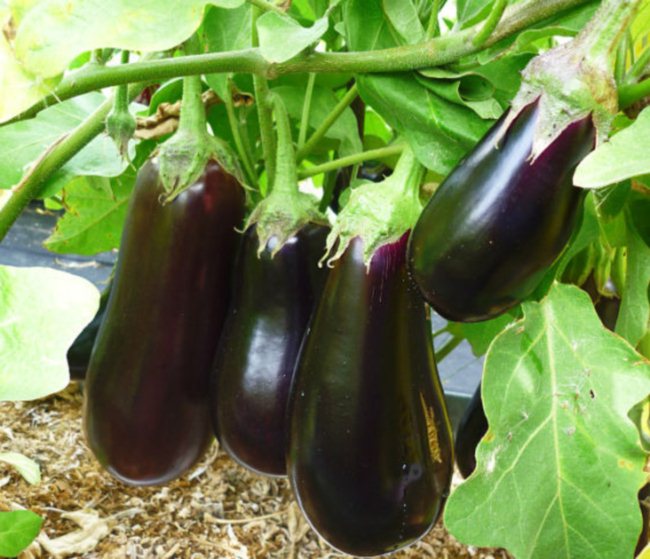
The choice of a variety is carried out according to the following criteria:
- The appearance of the fruit. A choice is made between small or large fruits, purple, red, green and other colors. The taste characteristics of these signs practically do not change.
- Kind of bushes.Choose from tall and short, compact or spreading.
- Harvest volume. Different types give different indicators from 1 to 17 kg of fruits from 1 m2.
- Ripening terms. Early ripening, early, medium and late varieties of culture.
- Species for any growing method. In open or protected ground, for direct sowing in the ground or transplant growing method.
- Other concomitant factors: immunity, cold resistance, heat resistance, and more.
Now the choice is only up to the grower, you should read the description and select varieties that are suitable for growing in a particular region.
Basic requirements for growing
Compliance with the rules and requirements will help you get the declared eggplant yield. With proper care and creating the necessary conditions, record yields are obtained. The main thing is hard work and patience.
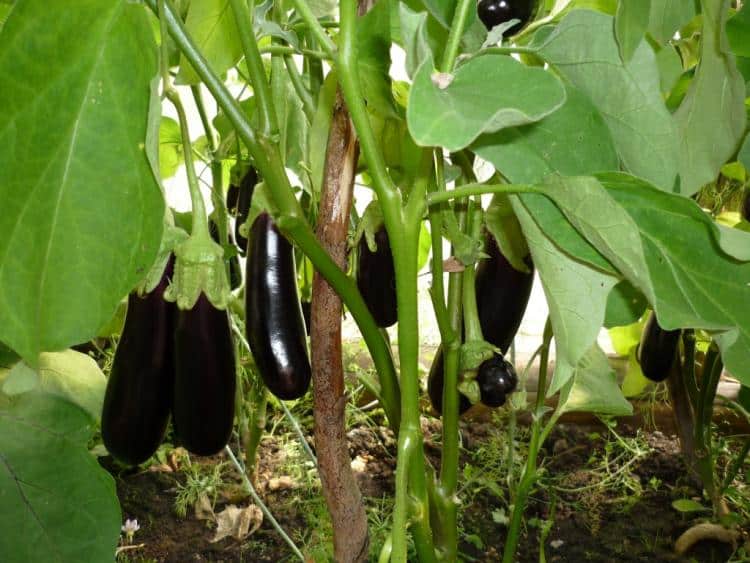
The heat-loving culture does not tolerate cold snaps, lack of sunlight, wind and frost.
Growing requirements:
- Site selection. The place should be well lit, free from drafts and strong winds. It is recommended to plant eggplant bushes behind raspberries or currants. Dense plants will protect delicate plants from the wind.
- With a lack of light, eggplants take off their color, the fruits are not tied at all. The plant behaves in the same way when the temperature drops. It is recommended to install arcs and cover the beds with polyethylene.
- Nutrient soil. Mandatory introduction of manure, compost, humus and other substances that can make the soil composition more fertile.
- Correct fit. They are grown by direct sowing in the ground or by seedlings. It is important to sow immediately in separate containers so as not to injure the root system.
- Agrotechnical techniques. Timely removal of weeds, proper loosening and top dressing will increase the yield.
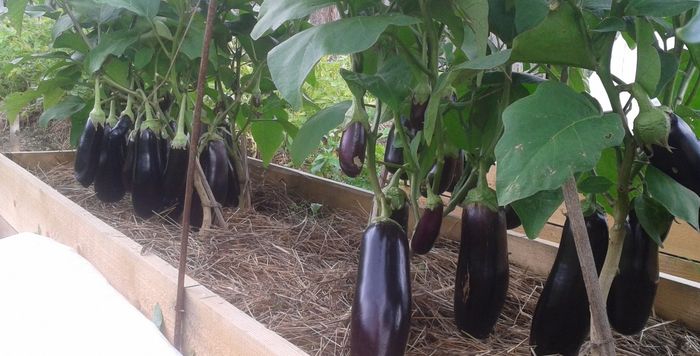
There are few requirements, but they are all significant and must be met.
Features of agricultural technology when growing eggplant
Growing culture, the main thing is not to be disappointed. If you know certain features of agricultural technology, errors should not arise. Compliance with the rules will lead to positive results. Properly planted eggplants will delight you with a bountiful harvest.
Preparing the garden
The first step is to select a place for landing. The site should be in the sun, closed from wind and drafts, and the composition of the soil should be fertile. The agricultural technology of growing crops warns that planting for several years in the same place is undesirable. The plants will get sick and the yield will drop significantly.
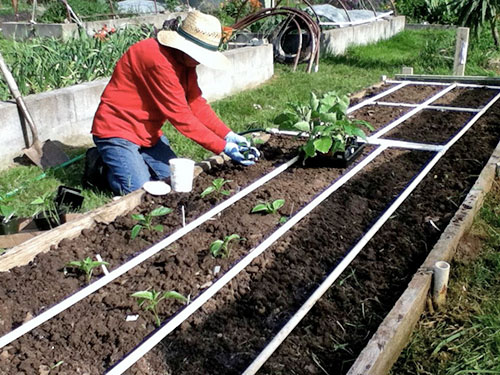
In the fall, fresh manure is introduced into the composition of the soil, dug up and left for the winter. In the spring, before digging, mineral fertilizers and wood ash with humus are added. Everything is mixed well and the eggplants are planted in prepared holes.
Preparation for growing seedlings
When a culture is planted in this way, the soil for seedlings is prepared in the fall. Sod land, peat, sand and humus are mixed in a ratio of 2: 2: 1: 2. Everything is thoroughly mixed and mineral fertilizers, potassium, superphosphate and urea are added. Small amounts of wood ash are added.
With the onset of planting seeds, the ground is watered with boiling water or a weak solution of potassium permanganate. The soil is ready, now you should prepare the seeds of the crop intended for planting.
The optimum temperature for seed germination is + 20 ... + 23 ⁰С. At lower temperatures, eggplants may not germinate.
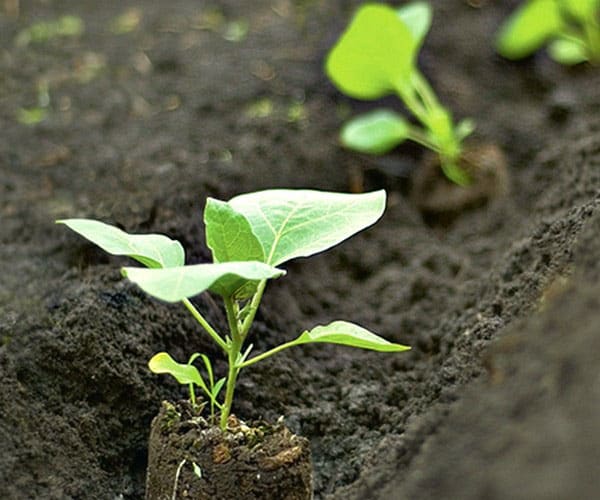
A week in advance, eggplant seeds are checked for germination. For this, part of the planting material is wrapped in a damp cloth or a piece of gauze. Keep warm until sprouts appear. Then the result is calculated. The higher the percentage of germinated seeds, the better the planting material.
Before sowing, the planting material should be disinfected.To do this, it is enough to keep the seeds in a weak solution of potassium permanganate. No more than half an hour, then they are washed and allowed to dry. After that, at the request of the grower, the seeds are kept in a growth stimulator.
Sowing seeds
First, the timing is determined, then the planting material is sown in prepared containers. The day is determined based on the characteristics of the climate of the growing region and the manufacturer's recommendations.
Landing is carried out as follows:
- the soil is watered;
- the distance between the seeds is 2 cm;
- distance between rows 3-4 cm;
- if cultivation is carried out without picking, then 2 seeds are sown in one container;
- sprinkle with a layer of earth 1 cm;
- tightened with polyethylene or covered with glass;
- before germination, leave in a dark place, the temperature of which is 30 ° C;
- after emergence, set on a sunny windowsill.

At first, before the appearance of the first true leaves, watered using a spray bottle.
Seedling care
The air temperature in the room with eggplant seedlings should be at least +17 ⁰С. After a few days, the temperature should be raised to +26 ⁰С. Daylight hours should be at least 10 hours. Therefore, when there is a lack of sunlight, additional lighting lamps are installed. They are placed at a distance of 20 cm from the tops of the seedlings.
Grown plants are watered very carefully, at the root. About once a week. Water for irrigation is taken warm or settled.
The plant is fed several times during the growth period in room conditions:
- 2 weeks after germination;
- after a pick, if carried out;
- a few days before transferring to a permanent place.
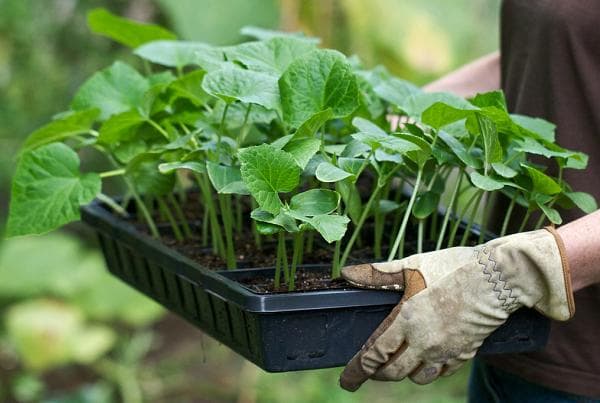
Such care will allow you to grow high-quality, strong seedlings, which will give a good harvest.
Dive seedlings
After the appearance of the second true leaf, the seedlings are dived. To do this, they are placed in separate containers. This is to ensure that the plants form a strong root system and do not stretch out. The soil for transplantation is taken fertile, well-heated and disinfected. Planted one eggplant in a container, watered well and set in a lighted place.
Outdoor transplant
At the time of transplanting into open ground, 6-7 true sheets should be formed on eggplants. The bed is prepared high, the distance between the rows is at least 1 meter. Leave 40 cm between the bushes.

In the garden, holes are made 15 cm deep, poured with water, in them and carried out planting eggplant... Transplant only with soil or peat pot. Plants are buried until the first leaves, this will make it possible to form additional roots.
Culture care
When the planted eggplant grows, it needs attention and care. It consists in observing simple agricultural techniques performed for any culture. Correct adherence to them leads to the achievement of a positive result. Taking care of the culture is not as difficult as it seems at first glance. It is important to understand the intricacies and apply them in practice.
Fertilization
How quickly the plant develops depends on the correct feeding of eggplants. Compliance with the dosage will help to grow the crop, not the green mass. The culture loves feeding, it is better to combine organic matter and mineral fertilizers. The poorer the land, the more often top dressing is applied.
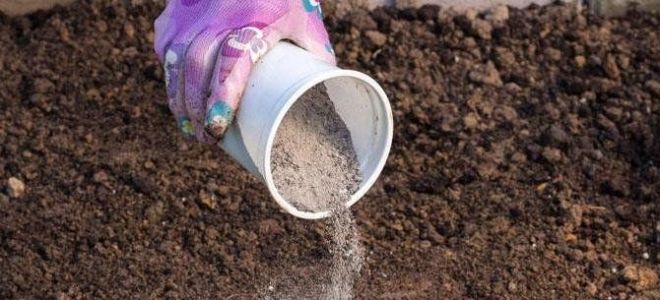
Plants need:
- nitrogen;
- phosphorus;
- magnesium;
- calcium and other trace elements.
Alternating chemical feed with organic is the best option. Complex mineral fertilizers are easier to calculate, and organic matter is safe for human health.You should be extremely careful with organic fertilizers. It's important not to overdo it. An excess of nitrogen contained in their composition greatly affects the growth of green mass.Fertilizers are applied mainly at the root, this helps to avoid burns on plants and accelerates absorption.
Watering and loosening
Watering the eggplant bushes is required regularly. There is no need to water immediately after transplanting, since eggplants are planted in watered holes. After 5 days, watered for the first time. If it is rainy weather, water it once every 10 days, if it is dry and sunny, then more often - once every 3 days. Watered with warm water in the morning, strictly at the root of each plant.
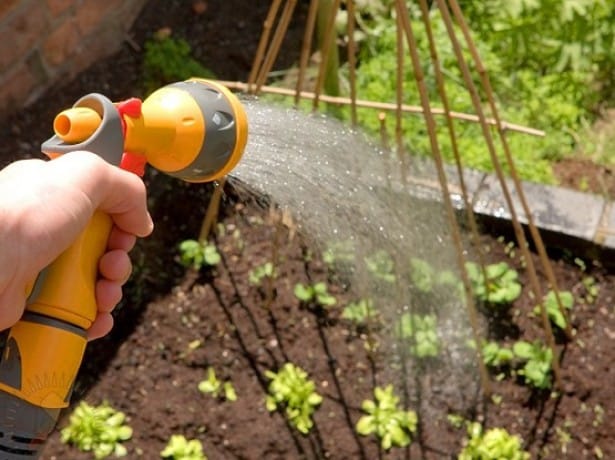
They loosen the ground around the eggplants after each watering, at first by 4 cm, during flowering by 6 cm, after the appearance of ovaries by 7 cm. It is impossible to go deeper, because the root system is too close to the surface. If, after each loosening, the bushes are slightly huddled, this will ensure the preservation of moisture and the supply of oxygen to the roots. In addition, the growth of weeds will slow down.
Bush formation
If the plants are not standard, they must be tied to supports. This will reduce the risk of the stepson breaking off with the fruit. Besides the garter, some eggplant varieties require shaping. All stepsons are removed before the fork, they only draw out useful substances, but do not bear fruit. But there is a plus from them, in the heat they cover the ground, preventing it from drying out quickly.
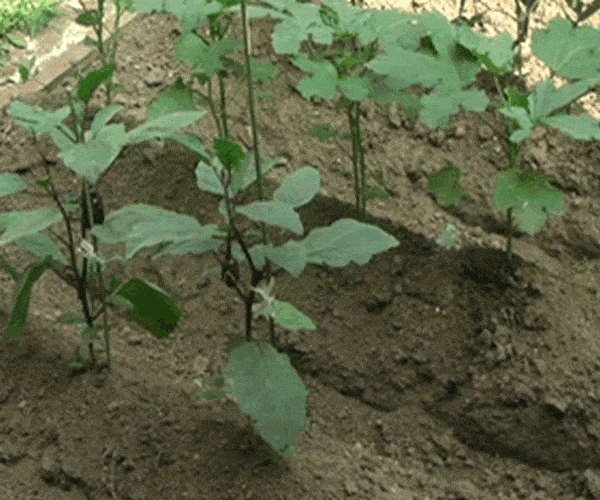
It is a personal matter for every vegetable grower to graze plants or not. But all yellowed leaves and fruits that have been deformed are removed from the plants. Many summer residents do not form eggplants in the open field; with proper care, they give an excellent harvest.
Possible growing problems
When growing a crop, it is difficult not to face some problems. The most common is that eggplant grows bitter. The reason for this is that plants lack warmth, moisture and sunlight. Overripe fruits are also very bitter, it is important to harvest on time, during the period of technical maturity.
If there is no fruit, which happens during a drought, then it is recommended to increase the number of waterings. And be sure to loosen after drying.
It happens that the color falls from the bushes, the fruit is not tied. There are several reasons, and the solutions are also different:
- Watering with cold water.
- Stable hot weather, temperatures above +30 ⁰С. Irrigating the top layer of the earth, bring down the temperature.
- Decreased temperature for a long time. Plants are fed with calcium nitrate.
- Banal drying out of the soil. Watering is required.
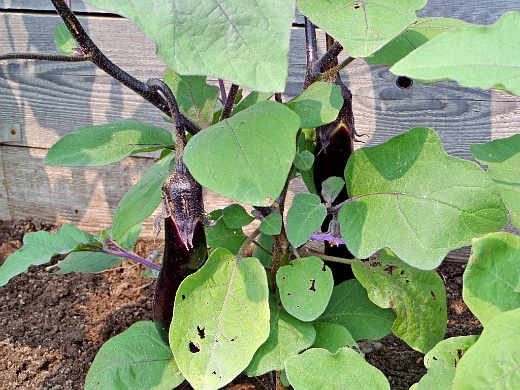
If the plant grows green mass, but there are no fruits at all, then there is an excess of nitrogen.
Disease and pest control
Than to fight eggplant disease, it is better to carry out timely preventive measures. Observance of crop rotation is the first and most important measure of disease prevention. The use of quality planting material leads to the fact that the plants grow healthier in the first place. Some summer residents wonder why eggplants do not turn blue, the reason is that the plants do not have enough light. The skin on the fruit becomes pale.
Treatment of plants from diseases is carried out chemically, or folk remedies are used.
The former are more effective and efficient, but dangerous for the human body. The latter are completely safe, but have a short-term effect. Summer residents are advised to take better care of the plants, then they will not get sick.
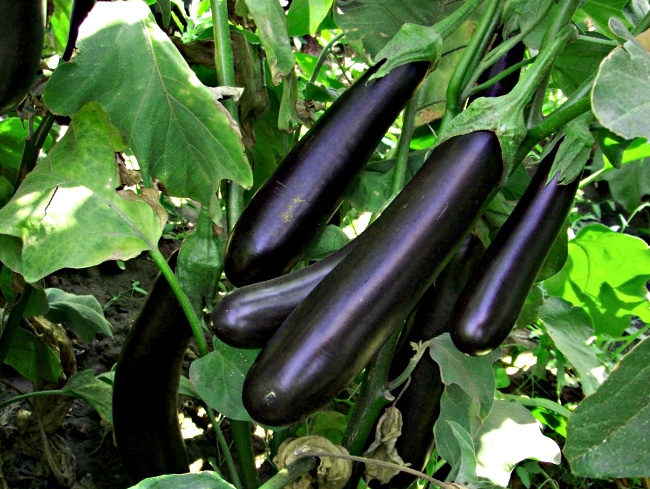
Harvesting and storage of crops
Eggplants are harvested at the stage of technical maturity, they are suitable for cooking and processing for the winter. It is very difficult to determine the maturity of a vegetable by its appearance. Therefore, they are guided by data from the manufacturer. The harvested fruits are stored in a dark cool room, which is protected from temperature extremes. Selected ripe eggplants are put in boxes and laid with straw. In this form, they are lowered into the cellar and stored for several months.
Growing eggplants on the site is a laborious process, since the culture is predominantly capricious, loves warmth and moisture.But an attentive attitude towards it, the fulfillment of all requirements is paid off by the resulting harvest.
